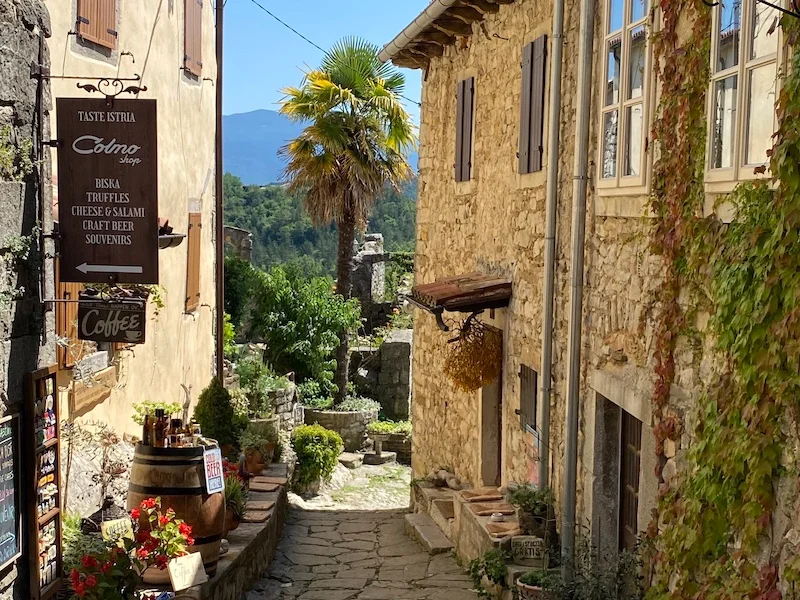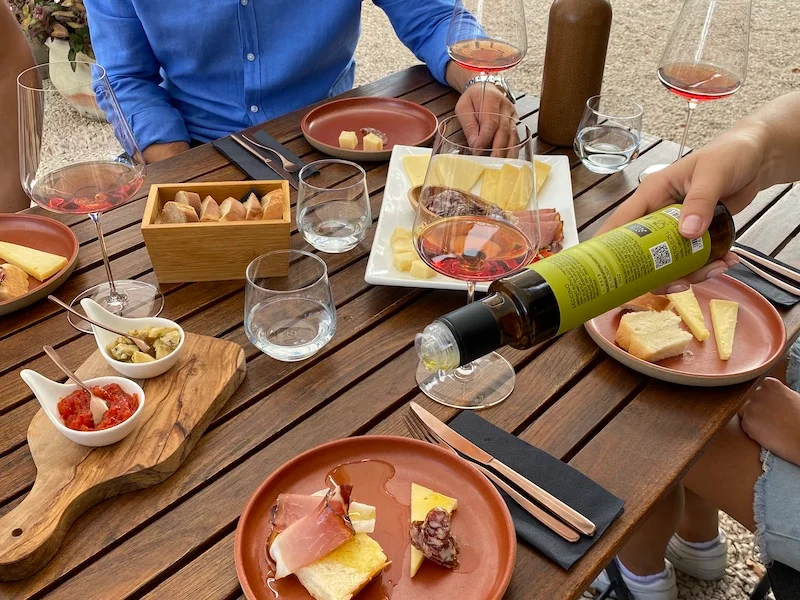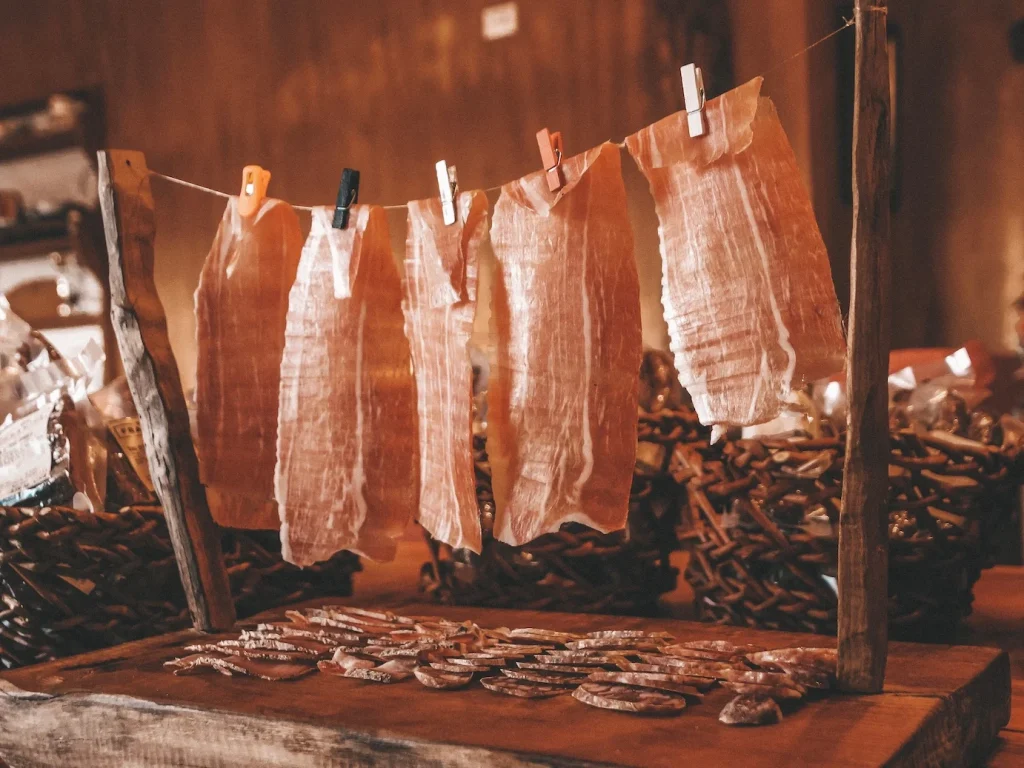Hum is a town in the western part of Istria. The town, which has only about 30 residents, is called “the smallest town in the world” and is located 14km away from Buzet. Hum was first mentioned in documents in 1102. At that time the town was named “Castrum Cholm”. Venetians and Celts used Hum as a strategic vantage point over the Mirna Valley. However, legends say that Hum was built by giants. After the giants had built the cities of Motovun and Groznjan, the remaining stones were used to build Hum, which is why the town only has two streets, a city wall and three rows of houses. Today, Hum is considered a monumental town due to its uniqueness.
Originally, Hum had three town gates, although to this day the town has only two streets. Today the smallest town in the world is entered through only one richly decorated copper gate. The town gate was built in the 11th century but has been renovated and replaced several times. In 1981 the old wooden gates were replaced by new copper gates. The project was led by the famous Croatian sculptor Želimir Janeš, who also created the well-known sculptures on the Glagolitic Alley between Roč and Hum. The gate is decorated with 12 medallions, each symbolically referring to a month of the year. The detailed images symbolically show various works that are carried out in the countryside at certain times of the year. For example, the October medallion shows autumn plowing, the January medallion shows an old man standing at the stove – it’s winter, the fire serves as a source of warmth and it’s time to rest.
Originally, Hum had three town gates, although to this day the town has only two streets. Today the smallest town in the world is entered through only one richly decorated copper gate. The town gate was built in the 11th century but has been renovated and replaced several times. In 1981 the old wooden gates were replaced by new copper gates. The project was led by the famous Croatian sculptor Želimir Janeš, who also created the well-known sculptures on the Glagolitic Alley between Roč and Hum. The gate is decorated with 12 medallions, each symbolically referring to a month of the year. The detailed images symbolically show various works that are carried out in the countryside at certain times of the year. For example, the October medallion shows autumn plowing, the January medallion shows an old man standing at the stove – it’s winter, the fire serves as a source of warmth and it’s time to rest.





